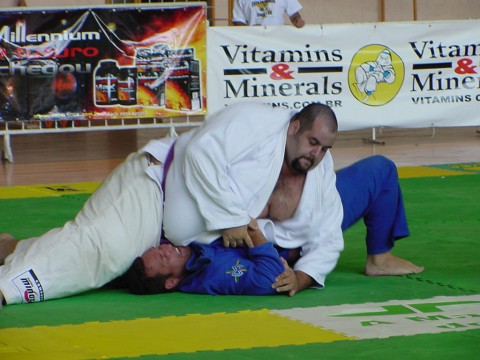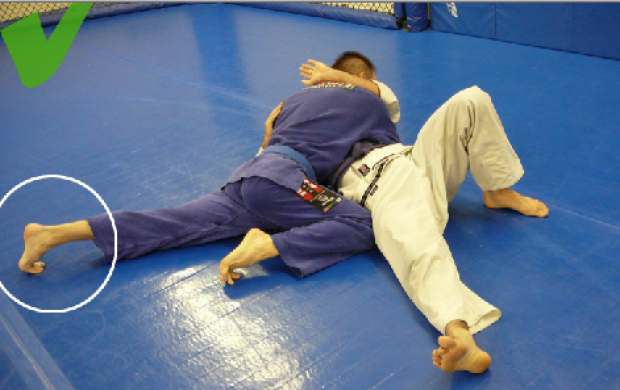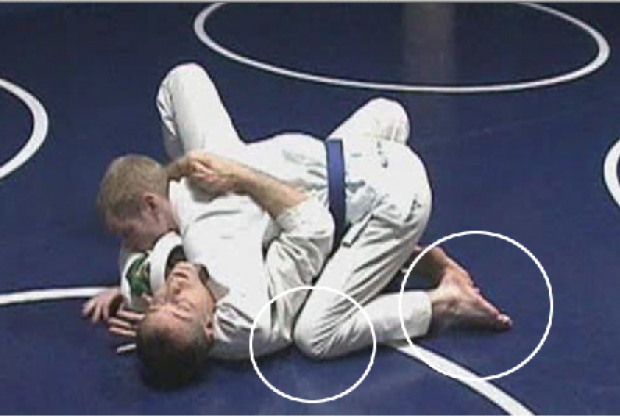5 Tips on how to create pressure and be heavy on your opponent.
How To Weigh 500 Lbs!
One of the almost miraculous aspects of grappling with a high level blackbelt in BJJ is how heavy even a 150lbs. opponent can feel on top of you.
In Brazilian Portuguese, side control is called “cem kilos” suggesting that the person on top feels like a 100 kilos weight on the chest of the person trapped on the bottom!
I recall a conversation on the mat several years ago with a 250lbs. white belt who – after tapping out to the pressure of my knee on the belly position – expressed shock at how heavy I felt.
He tried the position on me and I told him that he was 250lbs. but felt 150lbs! What was I doing differently to feel so much heavier on top?
Here are 5 Tips on how To create pressure and be heavier on your opponent.
1) Number one and most important! Don’t rest your weight on the mat – rest your weight on your opponent. Make them carry your weight.
Using the example of side control, if your weight is on your knees on the mat, the mat is absorbing your bodyweight and your opponent is more free to move their hips and escape.
Instead, contact your chest with your opponent’s chest and do not rest your knees on the mat.
2) Use your toes to drive off of the mat. I once watched an Olympic wrestler at an open mat coach a pro MMA fighter on how he managed to feel so crushing on top.
The wrestler demonstrated how he was up on his toes (as opposed to the top on the foot flat on the mat with your toes inactive) and actively driving off of the mat into the opponent. Toes on the mat = live foot. Top of foot down = dead foot.
In this way, you can leverage the very power of the earth and amplify your own bodyweight.
3) Understand the control points of the opponent’s body & concentrate your weight distribution.
Attempting top cover your opponents entire upper body with yours is not as efficient use of your bodyweight as focusing on key parts of the opponent’s upper body. Instead of a flat chest, concentrate your force on the opponent’s far shoulder to keep them flat.
Any time your weight is dispersed over a larger area, the perception of weight will be lessened.
Example: snowshoes work by spreading out the bodyweight over a larger surface area and allow the user to now break through the deep snow crust. Conversely, a much lighter person will easily sink into the snow with the smaller area of their boot.
4) Using structural torque. Similar in principle to how a boxers punch generates the most impact from a corkscrew motion of the arm, a corkscrew motion of your body in side control can maximize your ability to apply force to a specific area of the opponent’s body.
You see this most often in side control when the top is using a strong cross face/ head control. Instead of the hips being square to the mat with both legs positioned the same, the leg by the opponents head will be straightened, hip dropped to the mat and the other leg bent.
This configuration allows the top to torque his hips and torso to drive off of the mat and focus the pressure greatly on the head of the bottom.

5) Swiss ball type of pressure.
In an attempt to be heavier, many will try to grab the opponent as tightly as possible and stiffen their bodies, as rigid as a board.
In contrast, more advanced grapplers will maintain contact with opponent’s body the entire time (almost surfing on the opponent) and ride top of an unstable object.
This is the sensation that you are looking for. Your opponent is carrying your bodyweight, but you are fluid enough to adapt to their attempts to escape.
Apply these principles and your opponent will ask you after the roll “How much do you weigh anyway!?!”
Credits: Mark Mullen
GB Black belt from GB Calgary, Canada
Twitter: @MarkMullenBJJ
Imagem: Google

Comments are closed.